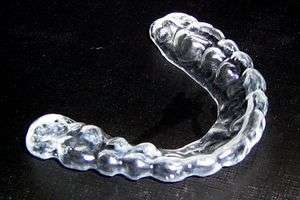Temporomandibular disorder
Background
- TMJ refers to temporomandibular joint dysfunction, a symptom complex caused by pain/dysfunction of the muscles of mastication
- Associated with bruxism, degenerative joint disease, trauma, and anatomical issues of the TMJ joint
Clinical Features
Differential Diagnosis
Jaw Spasms
- Acute tetanus
- Akathisia
- Conversion disorder
- Drug toxicity (anticholinergic, phenytoin, valproate, carbamazepine)
- Dystonic reaction
- Electrolyte abnormality
- Hypocalcemic tetany
- Magnesium
- Mandible dislocation
- Meningitis
- Peritonsillar abscess
- Rabies
- Seizure
- Strychnine poisoning
- Stroke
- Temporomandibular disorder
- Torticollis
Evaluation
- Clinical diagnosis
- Research Diagnostic Criteria (RDC/TMD) is gold standard for diagnosis/research purposes
- Pain in muscles of mastication, the TMJ, or the periauricular area, usually worsened by manipulation or function
- Asymmetric mandibular movement with or without clicking
- Limitation of mandibular movements
- Pain present for minimum of 3 months
- Consider imaging if history of trauma/facial trauma
Management[1]
- Analgesia
- Muscle relaxers
- Soft-food diet during acute episodes
- Moist heat, massage of masticatory muscles
- Occlusal splints/bite blocks at night for bruxism

Occlusal splint
Disposition
- Discharge
- Follow up with dentist/primary care provider
- 50% of patients have improvement in 1 year, 85% in 3 years[2]
See Also
External Links
References
- Tsai V et al. Temporomandibular Joint Syndrome Treatment & Management. Jan 2018. https://emedicine.medscape.com/article/809598-treatment.
- Guidelines for diagnosis and management of disorders involving the temporomandibular joint and related musculoskeletal structures. Cranio. 2003; 21(1):68-76.
This article is issued from
Wikem.
The text is licensed under Creative
Commons - Attribution - Sharealike.
Additional terms may apply for the media files.